In the second part of our series on transphobia in horror, we explore three more common trans tropes and the harmful effects of perpetuating these myths.
Before diving into the second part of our in-depth series on transphobia, be sure to catch up on part one where we lay the groundwork for this series, set the stage with some important definitions, and explore the first two myths and associated tropes regarding trans people in horror: 1) Monsters and Mutants, and 2) Killer Crossdressers. In this article, we will continue to explore three more harmful myths resulting from poor representation in our genre.
HORROR MYTH 3: GENDER NON-CONFORMITY AS A MENTAL ILLNESS
“I think film in general serves as both a mirror that reflects the ideas of the mass public, as well as what the filmmakers wish to present. In that way, many people feel that being trans is a result of mental illness, which is not the case. And of course, the filmmakers actively choose to portray it as such. I am not opposed to the idea of trans-based horror entirely. Dysphoria does not cause mental illness, but it can make mental illness worse. However, allowing for that nuance in film leads to mistakes in representation and affects public ideas of trans people.” – Persephone Valentine (The Broke-Ass Transwoman)
THE TROPE
Being gender non-conforming doesn’t make people dangerous, but what about mental illness?
Ed Gein was found “not guilty by reason of insanity” so he must have been super crazy right? Why else would someone go around killing people? And transgender people do have a much higher rate of mental illness than the rest of the population.
Former psychiatrist-in-chief of Johns Hopkins Hospital, Dr. Paul R. McHugh, the man responsible for the shutdown of the gender identity clinic in 1979, claimed in an op-ed for the Wall Street Journal that being transgender is a “disorder of ‘assumption’ – the notion that their maleness or femaleness is different than what nature assigned to them biologically.”
Ryan T. Anderson, a fan of Dr. McHugh’s work also argues in his book, When Harry Became Sally, that “sex change” is impossible, and claims “the feelings that people who identify as transgender report are real—they really feel a disconnect with their bodily sex—but I also acknowledge the fact that those feelings don’t change bodily reality.”
A review of Anderson’s book published in a certain Catholic magazine shockingly titled The Medical Monsters Among Us, also claimed that “nobody really is transgender because pretty much all of them grapple with underlying psychological problems and are fooled into the transgender answer by unscrupulous therapists, butchering doctors, and activists.” The article then goes on to call trans people a “social contagion”.
It makes me wonder how these mental health experts feel about trans conversion therapy?
Horror goes a step further, portraying trans people as dangerous because they’re mentally ill.
The movie In Dreams, which shares a director with The Crying Game, casts Robert Downey Jr. as Vivian, a gender non-conforming serial killer who preys on little girls in an effort to create a “perfect family”. In Dreams was actually RDJ’s second transphobic film, the first being 1991’s Soapdish, which has a transgender villainess who is “defeated” by being publicly outed.
Downey’s character even gags after learning he slept with a trans woman. Vivian has spent much of their life in an insane asylum, but eventually manages to escape by dressing as a female nurse and seducing a guard. The killer’s gender is left ambiguous for most of the film, and when Vivian is finally revealed, they’re shown with an effeminate appearance (long hair, makeup, etc.). They even dress up as their mother.
Most mentally ill trans movie killers are portrayed as suffering from split personalities: one male, one female.
The most famous example of this is Dressed to Kill, an erotic thriller that was presumably written by a man who panicked after realizing he’d only written enough for about thirty minutes of film and just padded the rest of the script with overly long scenes he tried to pass off as “suspenseful” and a bunch of his personal sex fantasies. You can practically hear him jerking off in the background when a bored housewife has sex in the back of a taxi with the man who’s been stalking her throughout a museum.
In the movie, Michael Caine plays a therapist named Dr. Robert Elliott who’s absolutely terrible at his job and wants to sleep with his female patients. Elliott also has a second, female personality named Bobbi who is seeking gender affirmation surgery, and is driven to a murderous rage when Elliott stops her from obtaining it. Or she murders women because they arouse her male side, or both… I dunno. The writer did about as much research on trans people as he did on psychiatry. At least they use Bobbi’s correct pronouns.
The killer in Blade in the Dark (from the director of Demons) has an equally baffling motive.
A man named Tony was bullied as child by a group of boys who told him he was a “female” if he didn’t venture into a frightening basement. And for some reason this causes Tony to develop a female personality named Linda. The film says it’s because Tony was “too fragile”, which caused his “masculinity to regress”. And since he can’t kill his female personality, he murders other women instead.
That, or Linda’s trying to hide their “terrifying secret”. Or both. Again, the film is less than clear.
Fenix from Santa Sangre (Holy Blood) is another example of a man driven to kill by a bloody-thirsty woman controlling his body. Fenix acts as the arms for his double amputee, performer mother, Concha, both on stage and off. So complete is Concha’s control over her son and his hands, which Fenix keeps perfectly manicured with long, red nails, that she even forces him to murder any woman she views as a threat.
The audience later learns that Concha was actually killed when her arms were cut off, and Fenix has in fact been the killer the whole time, driven to insanity after witnessing his mother’s brutal murder at the hands of his father. The reveal is remarkably similar to the one in Psycho, when we discover that Norma Bates has been dead all along and Norman is the real killer, controlled by the stronger “mother” personality who murders young women out of jealousy.
As the police psychiatrist explains “In Norman’s case, he was simply doing everything possible to keep alive the illusion of his mother being alive.” But unlike Fenix, Norman was the one responsible for his mother’s death, murdering both her and her lover in a fit of jealousy.
Sometimes, the male personality is the violent one.
One example is the made-for-TV movie, Vultures, where a man named Richard, played by famous female impersonator Jim Bailey (who referred to himself as an illusionist rather than a drag queen), starts murdering his family in order to inherit his much hated father’s fortune. Richard uses several disguises, including a really racist Romani costume complete with brown-face, to fool his family and commit the murders. Eventually he suffers from some form of psychotic break and one of his personas, Olivia Mann, becomes the dominant personality.
Since Richard was the killer, not Olivia, the police just let her walk out the door, which seems like really bad police work. But I’m not a cop, so who knows. Rich people can just do whatever they want, I guess.
Like Fenix, Barney from Girls Night Out believes she’s a dead family member, her twin brother in this case, and goes around killing women as him. Reflection of Fear gives us Marguerite, a shy, gentle, and intelligent girl, who owns a creepy and violent doll named “Aaron” (think Robert meets Chucky). Unsurprisingly, the doll turns out to be Marguerite’s other, male, personality who murders people to the sound of bongo drums. Marguerite herself is revealed to not only be deeply disturbed, but a boy forcibly raised as a girl by her mother who even went so far as to give her estrogen injections disguised as insulin.
Fatal Games is a rare example of a trans woman being the dominant personality, while her male alter ego is the killer.
Diane, played by Sally Kirkland, is a transgender champion athlete who was disqualified from the Olympics because her “sex change operation didn’t work” and her hormone tests showed too much testosterone. Understandably angry, her male persona starts murdering the students at the athletic prep facility where Diane works as a nurse. As soon as she’s outed, Diane begins speaking in a deep voice which is either a digitally altered version of Kirkland’s own voice or a stoned robot. Either way, it sounds ridiculous.
Trans people being disqualified from competing in the Olympics is, unfortunately, a real thing, and for a long time women were forced to undergo humiliating gynecological exams and chromosome analysis a.k.a. “sex testing” to prove they weren’t “transsexuals”. This not only meant the exclusion of trans women but intersex people as well.
Even in 2003, when the International Olympic Committee created official guidelines that allowed trans women to compete, they were still extremely limiting, requiring trans women to undergo surgery before they could compete. Of course, when trans tennis champion Dr. Renée Richards was barred from competing by the US Tennis Association in 1977 she didn’t go on a killing spree, she sued the USTA for discrimination (and won).
THE REALITY
This particular trope manages to be both transphobic and ableist, insulting two communities for the price of one.
Despite what Dr. Paul R. McHugh and his fanboy Ryan T. Anderson may claim, being trans and/or gender non-conforming isn’t a mental illness according to the American Psychiatric Association (APA), American Medical Association (AMA), World Health Organization (WHO), World Medical Association (WMA), American Public Health Association (APHA), and other leading medical organizations.
The Lancet, the world’s oldest and most prestigious peer-reviewed medical journal, published research and an op-ed explaining why being trans is not a mental disorder. The faculty of John Hopkins actually disavowed Dr. McHugh in an op-ed they wrote for the Baltimore Sun. As stated by the APA:
“A psychological state is considered a mental disorder only if it causes significant distress or disability. Many transgender people do not experience their gender as distressing or disabling, which implies that identifying as transgender does not constitute a mental disorder. For these individuals, the significant problem is finding affordable resources, such as counseling, hormone therapy, medical procedures and the social support necessary to freely express their gender identity and minimize discrimination. Many other obstacles may lead to distress, including a lack of acceptance within society, direct or indirect experiences with discrimination, or assault. These experiences may lead many transgender people to suffer with anxiety, depression or related disorders at higher rates than non-transgender persons.”
In other words, the increased risk of mental illness in the trans community is due to other people being shitty, not their gender identities.
Other medical professionals were also quick to call out the transphobic psychiatrist and his junk science. Being trans just doesn’t meet the definition of a mental disorder. And anyone who tries to argue otherwise is going to have to come up with some pretty convincing peer-reviewed evidence if they want to go up against WHO, the APA, the AMA, etc.
As for that random anti-intellectualism dude who always pops up in the Facebook comments section screaming about how he “don’t need no fancy book-learning” to know more than someone with several degrees on the subject, he’s not even worth engaging.
Scott D. Weitzenhoffer provided the perfect analogy for that sort of person in his review of Evolution vs. Creationism: An Introduction by Eugenie Scott. Trying to argue with the willfully ignorant is “rather like trying to play chess with a pigeon — it knocks the pieces over, craps on the board, and flies back to its flock to claim victory.”
Of course, trans and non-binary people can still suffer from schizophrenia and other severe forms of mental illness, just like anyone else.
But is that enough to turn someone into a skin-suit wearing serial killer? Not really, no.
You see, most serial killers aren’t mentally ill, at least not in the way most people think. They usually have either sociopathy or psychopathy, both of which are forms of antisocial personality disorder, and not considered a mental illness by the APA (and even then, that’s not a guarantee they’ll become killers).
David Berkowitz, the infamous Son of Sam killer who claimed his neighbor’s dog was telling him to murder girls, was found competent to stand trial. Berkowitz later admitted his demonic possession claim was a hoax. Jeffery Dahmer’s insanity plea was similarly rejected as was John Wayne Gacy’s. Dahmer was found guilty of fifteen charges of first-degree murder in 1992 and sentenced to consecutive life sentences for each murder, while the killer clown was found guilty of 33 murders and was sentenced to death by lethal injection.
Even Albert Fish, whose family had a history of mental illness and who frequently self-harmed, was found to be sane and sentenced to death by electric chair. The former manager of Bellevue Hospital, where Fish was treated in 1930, testified at the trial of the infamous killer, cannibal, and child rapist and explained that his former patient was abnormal but still sane.
So, what about Gein? Well, Ed was more of an exception than the rule. Despite its popularity in fiction the “insanity defense” is actually exceedingly rare and seldom successful, And in case you think the “insanity defense” is a “get out of jail free” card, it’s really not, the defendant is still incarcerated for their crime. Gein was sentenced to life imprisonment in a mental hospital until his death in 1984.
So no, killers don’t do horrible things because they’re “crazy”, nor does having a mental illness make someone dangerous.
Schizophrenia does carry an increased risk of violence (though much of that may be caused by the use of non-prescribed drugs to self treat due to a lack of accessible healthcare), but most people (87% to 88%) who suffer from the condition are non-violent (Fazel). Yet the majority of media representations seems to indicate otherwise (Owen).
Similarly, those diagnosed with Dissociative Identity Disorder (the correct terminology for “split personalities”) are rarely violent, but still widely misrepresented in the media as killers and criminals. In reality, the mentally ill are much more likely to be victims of violent crime than perpetrators.
WHO even stated that “People with schizophrenia are prone to human rights violations both inside mental health institutions and in communities. Stigma of the disorder is high. This contributes to discrimination, which can in turn limit access to general health care, education, housing and employment.”
Trans people and the mentally ill are frequently victims of discrimination, violence, and homelessness, yet society still views them as monster and murderers because of inaccurate portrayals in fiction and fear-mongering by the mass media.
HORROR MYTH 4: BEING TRANS IS THE RESULT OF ABUSE
To be honest trans folk do tend to become prey for perpetrators’ abuse for of a lot of the same reasons non-trans youth are put in that position: An abuser is going to choose prey they think they can manipulate, have a hold over, and who would be less likely to talk. It does not MAKE a trans person trans but a child grappling with issues. Dealing with something already (death in the family, parental divorce, or some variation of body dysphoria) will them easier to manipulate…” – Ashley Rogers (author, actress, and playwright)
THE TROPE
So, if a mental illness isn’t responsible for someone being trans, what is?
Back in the 1940s, Dr. David Oliver Cauldwell claimed “The small boy, admiring his mother far too greatly, wants to be like her. Normally the boy outgrows this fancy. Even when a fond mother over-indulges her son, if he is of good sound sexuality and desirable hereditary antecedents, he will develop into normal masculinity – physically and mentally. The over-pampered boy with a weak glandular system and a poor hereditary background is a potential psychopath. Maternal pampering prevents him from outgrowing this potentiality. Many such male children grow up to be entirely harmless.”
Irving Bieber later popularized the theory that gay men had a weak or absent father and a dominating, overbearing mother who babied them in his 1962 study on homosexuality. If an overbearing mother could make a boy gay, could she also make him trans, or even drive him to murder?
Hadden Clark’s mother, who had wanted a daughter rather than a son, would dress young Clark in girl’s clothing and call him “Kristen” when she was drunk. Clark would continue to cross dress into adulthood, when he first began to murder young women and cannibalize their corpses, earning himself the moniker “the Cross-Dressing Cannibal.”
But Clark wasn’t the only killer who was forced to don dresses as a child.
Henry Lee Lucas’ first victim was his much-maligned, sex worker mother, the same woman who would put in in girl’s clothing as a child. Lucas went on to murder two more women, though he claimed credit for hundreds more. His companion and lover, Ottis Toole, experienced a similar humiliation at the hands of his religious zealot mother.
Carroll Cole’s mom would have him wear frilly dresses and serve tea to her friends while they mocked him. Cole committed his first murder at age nine, drowning a little boy who called him a sissy. Twenty-five years after the murder of his classmate, Cole would begin his killing spree.
Even Charles Manson’s abusers, his religious aunt and uncle, would force him into frocks for his first day of school to encourage Manson to “man up”.
In all these examples boys were humiliated by their families by being forced to wear girl’s clothing and later became violent. Research has shown that “maltreatment is a major determinant of future criminal behavior.” (Currie).
Abusive, domineering mothers seem to be a common trope in transphobic horror films.
Psycho gave us the most famous example in the overbearing, emotionally incestuous Norma Bates who is implied to have driven her son to madness and murder.
The historical drama, The Damned, takes things even further. Martin von Essenbeck, a playboy and Nazi supporter, is dominated by his abusive and controlling mother. Weak, angry, and terrified of his mom, Martin goes after easy prey, young girls he can sexually abuse. To further emphasize his sexual deviancy, Martin also cross dresses and performs in Marlene Dietrich drag, ironic since the Nazi party condemned the LGBTQ and Heinrich Himmler was especially concerned with “eradicating homosexuality”. Martin eventually overcomes his fear of his mother and rapes her.
Of course, both Norman and Martin didn’t start crossdressing until adulthood.
In most of the films I viewed for this article, forcing a little boy to wear a dress seemed to be what really pushed them over the edge.
Much like Norman Bates, Marliston from Cherry Falls dresses as his dead mother, Lora Lee, to murder his victims, complete with bright red nails, a color that features prominently throughout the film. Unlike Bates, however, Marliston doesn’t seem to suffer from a split personality, though his cross dressing is the result of maternal abuse.
Lora Lee would frequently beat her son, the product of a brutal gang-rape, and dress him as a girl. Interestingly, Marilston also murders a femme boy named Timmy who sports similar red nail polish.
Queer victims in horror aren’t uncommon, but it’s rare they’ll be murdered by someone else who’s gender non-conformity.
Unhinged, one of the UK’s original 72 “video nasties” has a similar premise to Psycho, and even has a character named Norman. Mrs. Penrose is a controlling and abusive mother with a deep hatred of men, stemming from her ex-husband’s rape of an eight-year-old. She verbally and emotionally abuses her daughter, Marion, and forces her developmentally delayed son, Carl, to live in a shed. At first, it’s assumed that Carl is the one killing women but of course it’s ultimately revealed that Marion, who is actually a boy being made to live as a girl by his mother, is the real killer.
Like Mrs. Penrose, Louisa from Deadly Blessing despises men so much she decides to raise her son as a girl named Faith. Of course, changing Faith’s gender has no effect on their sexuality. And after falling in love with their neighbor, Martha, Faith murders Martha’s husband and anyone else they feel is getting in the way of their love. Louisa is equally unstable, killing anyone who discovers her “daughter’s” secret.
The Black Bride from the Insidious series shares a similar backstory, revealed in Insidious 2. The Bride is actually a man named Parker Crane whose mother wanted a daughter rather than a son. Forced to live as a girl, combined with his terrifying mother’s controlling abuse, Crane’s sanity finally snaps and he dons a dark wedding dress to murder women as the Black Bride, eventually attempting to castrate himself before jumping to his death, then finally returning as vengeful spirit.
Angela, the villain protagonist of the Sleepaway Camp series, was once a boy named Peter. After the death of Peter’s twin, the boy is sent to live with his aunt Martha. But because she already has a son, Martha decides she doesn’t want another boy and that Peter shall now be “Angela”. It’s implied that Angela’s gender and sexuality is further confused by an incident in her youth when she witnessed her father in bed with his lover, Lenny.
Angela’s penis is used as part of a “shocking” reveal in the first film’s infamous final scene, her body made more horrific by the blood of her victim dripping down it.
In the sequel, Angela gets gender affirmation surgery, which is supposed to help cure her insanity, but that does nothing to curb her homicidal tendencies. The only difference this time is that Angela now murders anyone she believes is behaving immorally, as oppose to getting revenge on her bullies.
Then there’s the House At The End Of The Street, starring Jennifer Lawrence, who already has a problematic history when it comes to transphobia (she once made a joke about “hermaphrodites” and named her cat Chaz Bono because she had “masculine energy”).
Lawrence’s love interest, Ryan, has been secretly kidnapping women in an attempt to replace his dead sister, Carrie-Anne, and killing anyone who gets in his way. Ryan’s parents blamed him for Carrie-Anne’s death, and tried to turn him into a replacement for his deceased sister by dressing him in her clothes and calling him by her name. After enduring years of abuse, Ryan murders both his parents so he can finally be free to live as himself, only to continue their obsession with keeping Carrie-Anne “alive”.
And let’s not forget Marguerite from the previously mentioned Reflection of Fear who develops a violent split personality after being made to live as a girl.
Less common are women forced to live as men who turn into killers.
The first scene in Homicidal shows a little boy named Warren stealing his sister’s doll, implying he’s already a deviant. Warren was born a girl, but her mother hid her gender and raised her as a boy in order to protect her from her abusive, misogynist father and allow her to inherit the family fortune, which can only go to a male heir. Sick of the farce, Warren creates an alter ego named Emily so she can live openly as a woman.
The film implies that the abuse she received throughout her life caused her to hate, and that hate built up until eventually Warren became homicidal. She murders anyone who discovers her secret, stands in the way of her inheriting her father’s fortune, or was an accessory to her abuse. For some odd reason the filmmaker’s dub over Warren’s voice with a male actor, which looks odd and sounds odder.
Like Warren, Nina from Four Flies on Grey Velvet had an abusive father who wanted a son and not a “weakling”. Nina was forced to dress and act as a boy growing up, and like the previous examples, is driven insane by the abuse. When she begins to display signs of homicidal behavior Nina’s father has her locked up in a mental institution until she’s “cured”. Unfortunately, Nina’s husband, the film’s protagonist, reminds her of her stepfather, triggering a killing spree.
Private Parts (not the one with Howard Stern) is definitely one of the weirder films on the list.
It’s about a naive girl named Cheryl who moves into her Aunt Martha’s seedy hotel and now has to deal with an assortment of extremely odd new neighbors. Aunt Martha has a son named George, a voyeuristic photographer who becomes obsessed with Cheryl and tapes her face to a water-filled sex doll which he injects with blood in an attempt to mimic intercourse.
As I’m sure you’ve already guessed, George is actually a woman, forced to live as a man by his misogynistic mother who believes all women are “whores” and that allowing George to live as a woman will corrupt him. Surprisingly, Martha is revealed to be the killer, not George, though he’s hardly innocent himself. She murdered her “son’s” last girlfriend, Alice, and anyone who comes looking for Cheryl.
THE REALITY
Okay, so obviously the whole “overbearing mom making you gay” theory is garbage, and I’m not going to waste time going over that.
Making a cis-man live as a girl isn’t going to make him trans either. Just look at the case of David Reimer. As an infant a botched circumcision damaged his penis beyond repair, so Reimer’s parents took him to “gender specialist” Dr, John Money, who worked primarily with intersex patients. Money believed that nurture, not nature, determined gender identity and recommended the boy be given a surgically constructed vagina and raised as a girl instead.
But Reiner never identified as female, even with estrogen injections and gender “therapy” (I use the term loosely, as Money’s treatment was harmful to his patient). When Reiner finally learned the truth at 14, after telling his parents how depressed and suicidal he was, he chose to reverse his gender reassignment. So no, you can’t make someone trans any more than you can make them cisgender.
As for creating a killer by forcing a child to cross dress, if that’s all it took, one would expect more trans men and women to turn to murder after being made to live as the wrong gender for years.
Yes, psychological abuse through humiliation does contribute to violence.
And being put in a dress can certainly qualify since many people believe the worst thing you can do to a man is imply he’s a woman (yay sexism), but it’s unlikely to be the sole cause of a killers’ violent tendencies.
Ed Gein, Albert Fish, John Wayne Gacy, Richard Ramirez (the Night Stalker), Pedro López, and Albert DeSalvo (the Boston Strangler) were never made to wear dresses as children, and they still became serial killers. Every serial killer I just mentioned also experienced violence, sexual assault, and/or neglect as young children.
Henry Lee Lucas was a victim of sexual abuse and neglect. When he injured his eye at ten his mother refused to get him medical attention, resulting in the loss of Lucas’ eye. He repeatedly witnessed his alcoholic father beat his mother and was reportedly forced to watch her have sex with her clients. By the age of ten, Lucas was already drinking, torturing animals, and displaying age-inappropriate sexual behavior, yet he received no help.
Ottis Toole was also an alleged survivor of childhood sexual assault and incest. Though, he had a habit of making outlandish claims, like having a Satanist grandmother who made him practice self-mutilation and grave robbing — and carrying out murders at the at the behest of a fictitious cult. Toole also corroborated Lucas’ false murder confessions, after initially denying them, so it’s unclear how much of his childhood was fabricated.
Carroll Cole was also forced to watch his mother’s sexual encounters while his father was off fighting in WWII, and was then beaten to assure his silence. Lucas killed his mother during an argument where she assaulted him with a broom, and Cole murdered women who reminded him of his abusive mother. In a press interview Cole explained “I was primed, I had made the mental commitment I was going to get even with my mother, and things just built up and built up and became an obsession.”
Charles Manson was frequently neglected by his alcoholic mother. Hadden Clark’s parents were both alcoholics who physically and emotionally abused him and his siblings. He was unable to hold down a job due to his untreated paranoid schizophrenia and relied on theft to survive. Maybe he did identify as female or gender non-conforming, and maybe he didn’t. Either way, despite his appellation of “The Crossdressing Cannibal”, his cross dressing and gender identity had nothing to do with the crimes he committed any more than his race or nationality did.
Not all killers are even abuse victims.
Dennis Radar (the BTK killer), Richard Cottingham, and Randy Kraft, all had seemingly happy, normal childhoods, but still grew up to be killers.
In fact, the Minnesota twin study showed that psychopathy is partially genetic, and another study conducted by Drs. Heather Mitchell and Michael G. Aamodt found that 32% of the (admittedly small sample size) serial killers they studied didn’t experience any childhood incidents of abuse or neglect. So even good parents can raise killers.
But just as not all killers were abused, “…not all abused and neglected children grow up to become delinquents, adult criminals, or violent criminal offenders” according to Dr. Cathy Spatz Widom, an expert in the psychology of childhood abuse and neglect. In one of her papers, Long‐Term Impact of Childhood Abuse and Neglect on Crime and Violence, Widom points out that “the majority of abused and neglected children do not become delinquent, criminal, or violent offenders”.
In fact, it’s much more likely that abused children will grow up to be victims, rather than abusers and the “increased rate of criminality” among survivors also includes non-violent crimes like petty theft and drug use.
So no, abuse can’t change your gender identity any more than putting a boy in a dress guarantees he’ll grow up to be a killer.
So why is this trope so prevalent in horror? Angela’s gender adds nothing to the story, and the final scene of Sleepaway Camp would have been just as terrifying without the penis reveal and a horrified counselor gasping “She’s a boy!” Her motive to murder the bullies wouldn’t have suffered either. So why even add a “trans twist”?
While we’re occasionally meant to sympathize with the abuse victim, more often than not filmmakers will reveal the killer’s true gender in order to horrify the audience. Their gender non-conformity is tied into their overall depravity and trans bodies are treated as “monstrous” things to disturb and disgust “normal” people.
But trans and non-binary bodies aren’t “wrong” or “bad” any more than cis bodies are, and suggesting otherwise sets a dangerous precedent.
HORROR MYTH 5: DISGUISED AS A WOMAN
“Trans people are looked at as deceivers. People who are harboring a secret.” – Ashley Rogers (author, actress, and playwright)
THE TROPE
Okay, so we’ve established that trans and non-binary people aren’t mentally ill murderers who want to become their mothers. But what about cross dressers like Hadden Clark? What’s to stop a cis-man from dressing up as a woman to gain access to women’s only spaces and prey on innocent girls?
This question arises anytime a bathroom bill shows up on a ballot. Prime time cable is suddenly inundated with commercials put out by groups like “Citizens for Good Public Policy,” “Campaign for Houston,” or “Keep MA safe.”
The ads are almost all identical: a young blonde girl goes to use a public restroom, only to be followed by a sketchy cis-man who’s presumably had Chris Hansen bust into his home at some point. An ominous female voice-over goes on to tell us how “any man claiming to be a woman can enter a women’s bathroom or locker room, even if he’s a convicted sex offender, and no one is allowed to do anything about it because that’s what the new law says, but please don’t actually read the law to see if we’re fear mongering, just take our word for it”.
Then there’s the “Protect Anchorage” ad that argues “Anchorage is already a tolerant city” as if they’ve already met their tolerance quota by letting Black people use the same bathroom as Whites. The message of these suspiciously similar ads (do they just recycle the same commercial over and over to save money?) is clear: cisgendered, heterosexual men are pretending to be women so they call do horrible things to “real” women whose safety we’ve never cared about before, but now suddenly we do.
You see it all the time in horror movies.
In Terror Train, which stars scream queen Jamie Lee Curtis and David Copperfield (playing, unsurprisingly, a magician), the male killer disguises himself as a woman in order to sneak aboard the titular train and murder his former classmates.
Erotic giallo flick Delirium has the protagonist’s brother, Tony, donning a blonde wig and playing his voice at a high speed to make it sound feminine (as oppose to sounding like Alvin the Chipmunk which is what actually happens) so he can kill anyone who gets too close to his sister whom he may or may not be sexually attracted to.
I only know Tony is dressed as a woman because he says that he is, but then clarifies that he “hasn’t become a transvestite”. Then he gets shot in the balls by the creepy peeping Tom who lives next door and makes sexually explicit prank phone calls. I don’t know why he had to dress like a woman (I guess long hair makes you a woman now). But the movie didn’t even bother to give Tony a real motive, so who knows what was going on in the writer’s head.
Prom Night has another killer brother, this time dressed as his deceased sister, getting revenge on everyone responsible for her death.
At least in this film, the crossdressing kind of makes sense, as the killer wanted everyone to believe the ghost of his dead sister had returned.
I guess murderous brothers are a thing, because Eric from Stripped to Kill also dresses as his deceased sister to commit murders. But unlike the previous example, Eric’s the one who killed her. Much like Tony, Eric was driven to kill because he doesn’t want anyone coming between him and his sister, especially her girlfriend, Angel. After killing both his sibling and her lover, Eric assumes his sister’s identity and goes after her coworkers at the strip club.
For a film about a serial killer who targets sex workers, Stripped to Kill is shockingly not as misogynistic as you would imagine, at least not as much as the similarly named Dressed to Kill. It even passes the Bechdel test. The strippers are given actual characters, have meaningful relationships with each other, and discuss the dangers of sex work.
Brothers aren’t the only family members who disguise themselves as women to seek revenge. In The Comback the father of a dead girl disguises himself as an old woman to carry out crimes against the musician he believes is responsible for his daughter’s suicide. The musician is initially suspicious of his manager, Webster, who seems to be hiding something.
But it’s later revealed that Webster’s “big secret” is completely harmless. He enjoys crossdressing and simply wants his private life to remain private. This is an interesting example of a non-gender conforming person in a horror film not being cast as a villain, pervert, or victim.
THE REALITY
It seems a lot of people are really scared of the idea of creepy men pretending to be trans women so they can assault people, even though that fear has no basis in reality.
First of all, trans women are women, not cisgender men in skirts trying to “trick” people, despite what transphobic 90s comedies and “trap” porn claim. Second, cis men can’t just claim to be trans in order to gain access to women’s only spaces.
For example, the Massachusetts law that allows trans people to use the restroom that matches their gender also makes it illegal for someone to pretend to be trans “for an improper purpose, such as to engage in unlawful conduct.” I guess the “Keep MA Safe” people never actually bothered to read the ballot measure they were opposing. Not that the provision is really needed, because cis-men donning dresses just so they can sneak into the lady’s room is not a real thing that has never happened anywhere. Ever.
Media Matters was unable to find any evidence of increased rates of assault in states where transgender protections were passed.
Research done by the Williams Institute found that “the passage of [transgender protection] laws is not related to the number or frequency of criminal incidents in these spaces”. Another study, published in the Journal of the American Academy of Psychiatry and the Law concluded that “From a scientific and evidence-based perspective, there is no current evidence that granting transgender individuals access to gender-corresponding restrooms results in an increase in sexual offenses.”
Even law enforcement officials think anti-trans bathroom bills are stupid.
Police chiefs in Texas held a press conference at the capital to explain why they thought a proposed bathroom bill was discriminatory and essentially a waste of their time. Back in 2016, when Mother Jones asked police in North Carolina how they intended to enforce a recently passed anti-trans bathroom bill the most common response was laughter and “We’re not checking birth certificates. We just don’t have the police power to be able to do that in bathrooms.”
Even Hadden Clark “the crossdressing cannibal” didn’t cross dress in order to gain access to women or commit murders. And both his victims were people he already knew, not random women. He went after both of his victims close to their homes, not in a locker room or bathroom, presenting as a man.
Killers, rapists, and child molesters don’t need to put on a whole charade that involves lying about their gender to gain access to victims, because they already have access to them. According to the FBI only about 8.3% of murder victims are killed by a stranger, while more than 90% of rapists and child abusers go after people they know.
And bathroom bills certainly won’t do anything to protect men from being assaulted. Male predators pretending to be women (cis or trans) to prey on the innocent is just not a real thing, but restrictive bathroom regulations DO put trans people in danger.


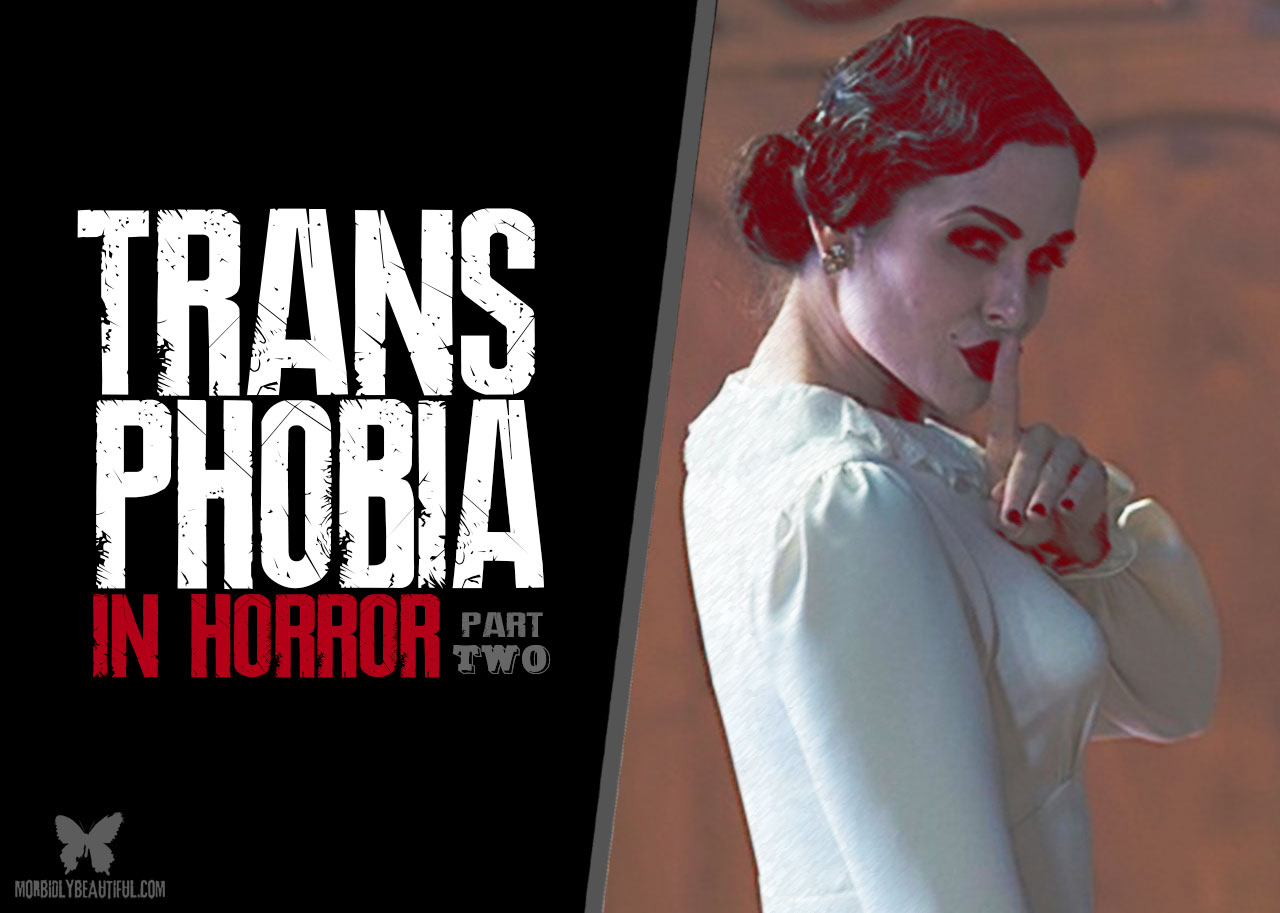
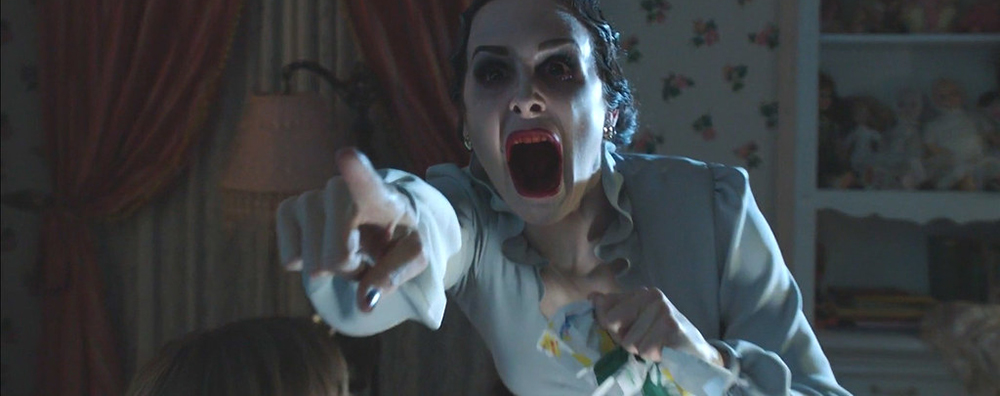
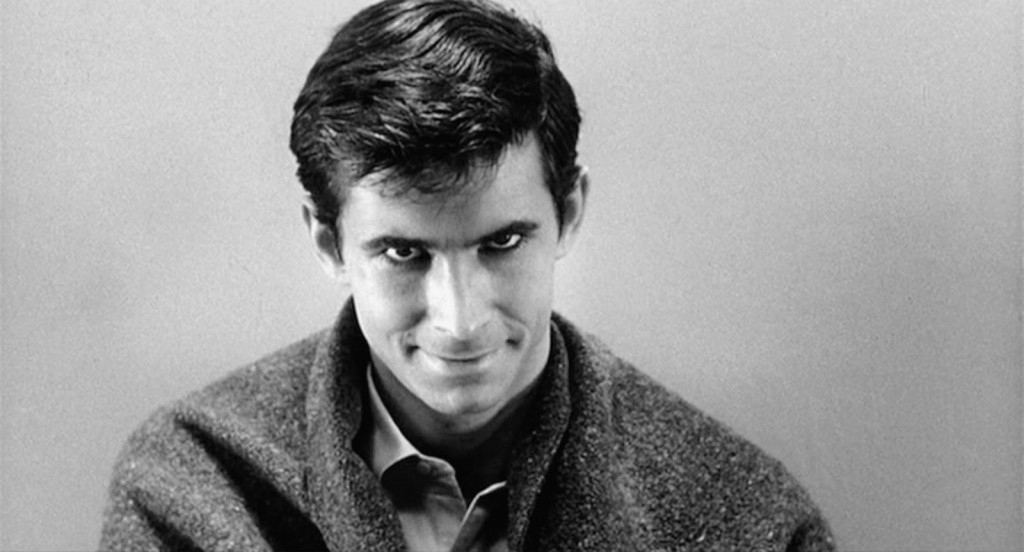



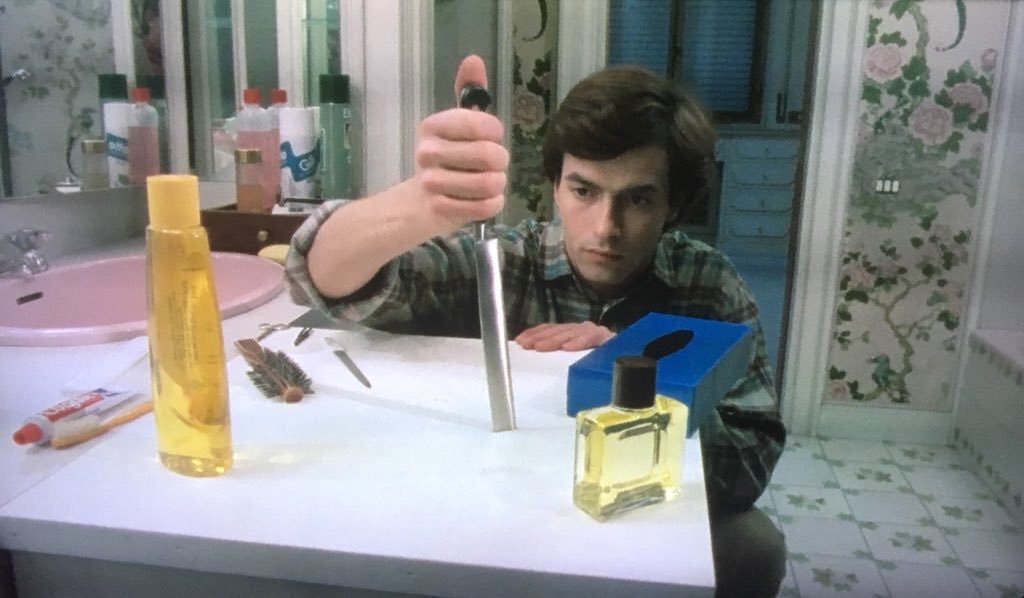
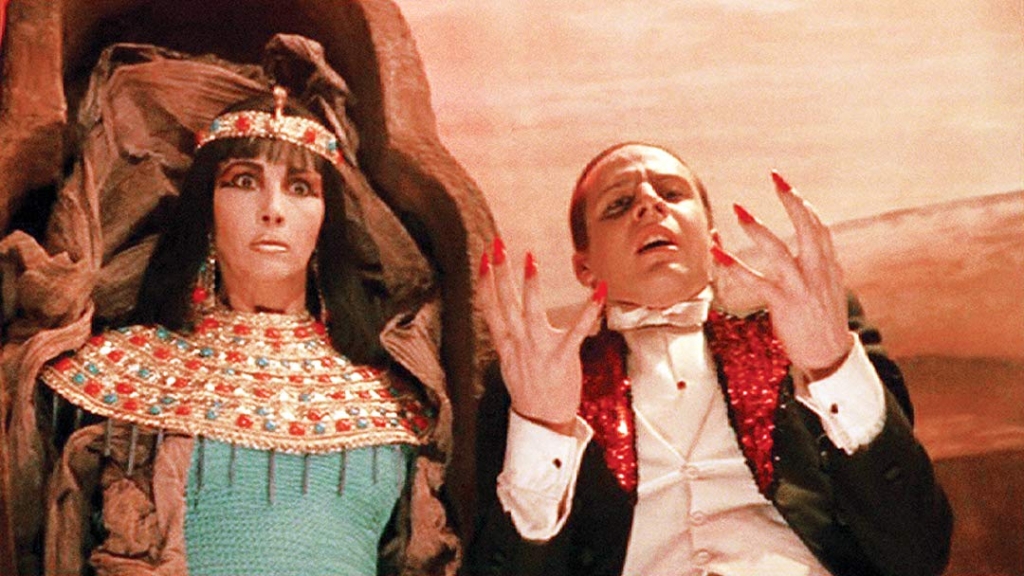
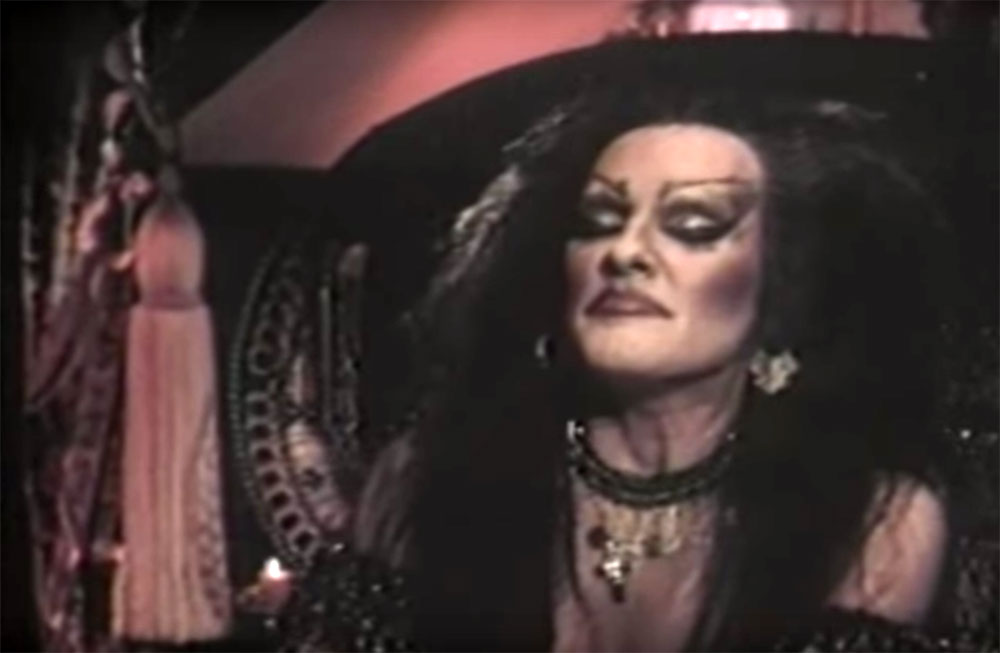



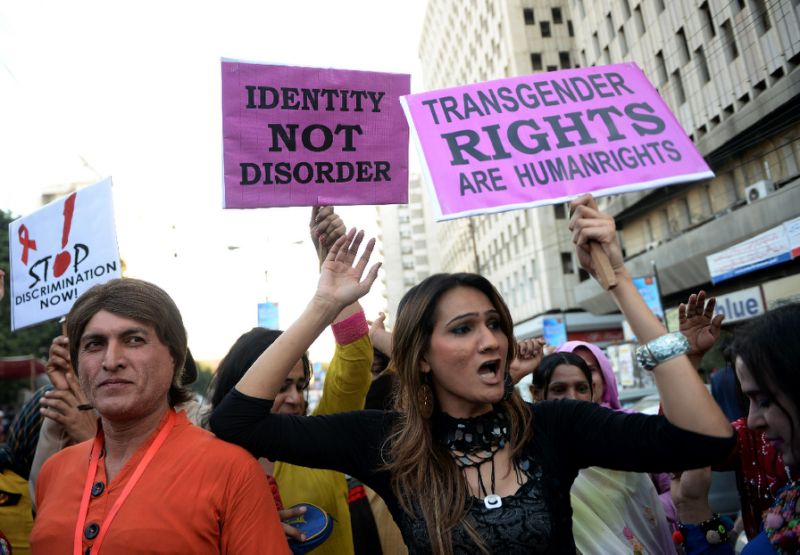
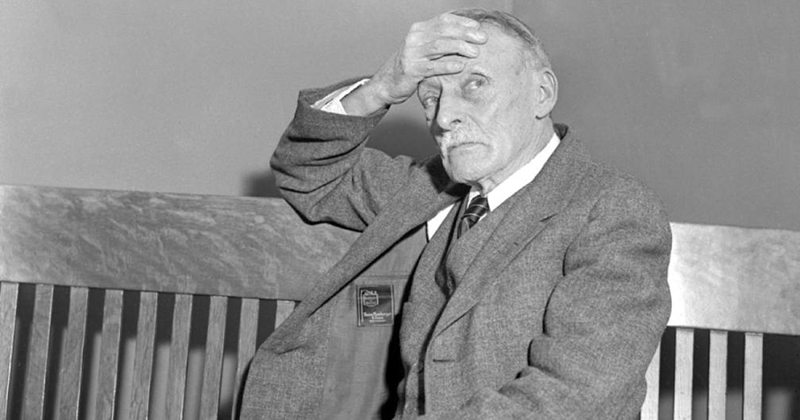

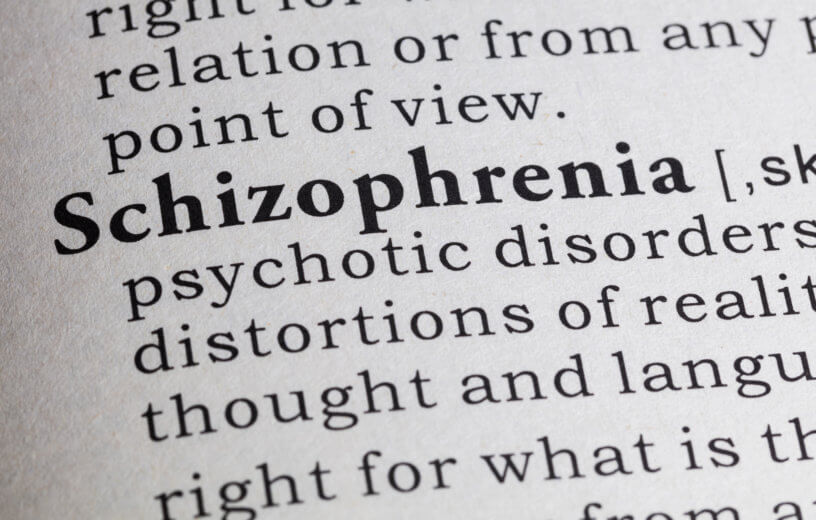

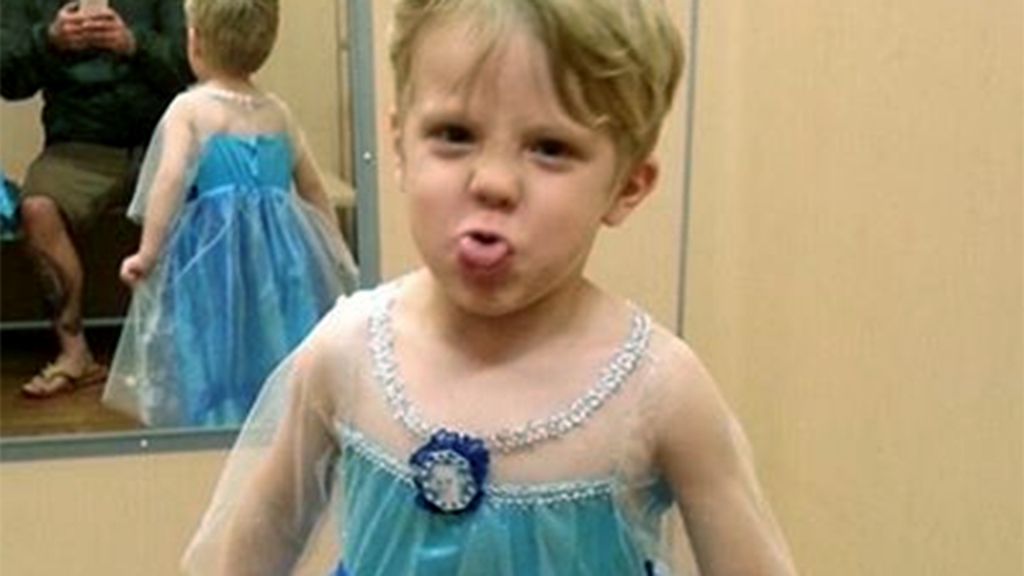


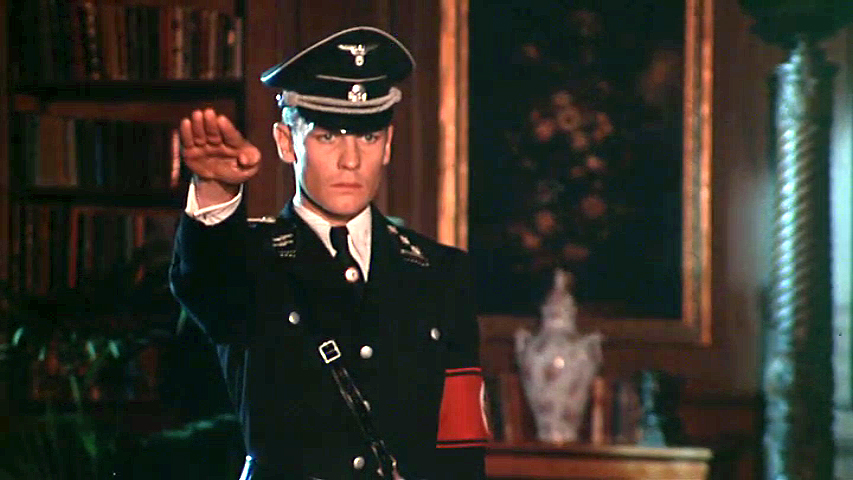

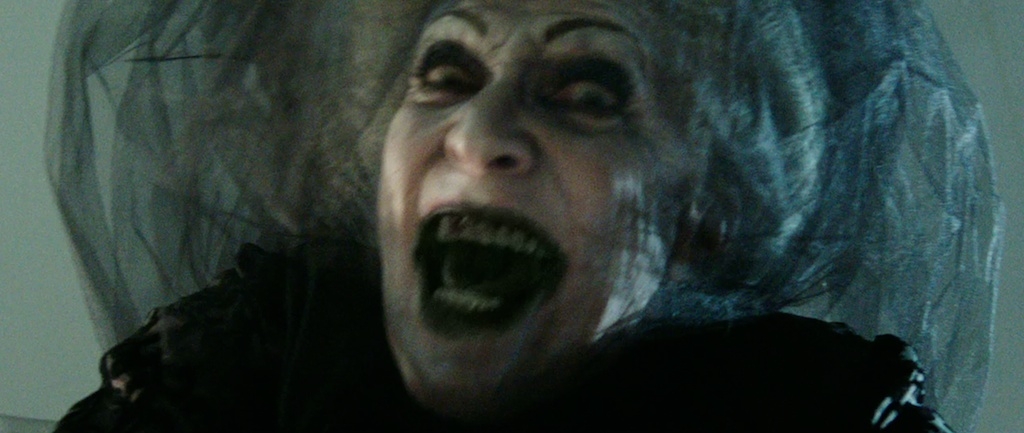
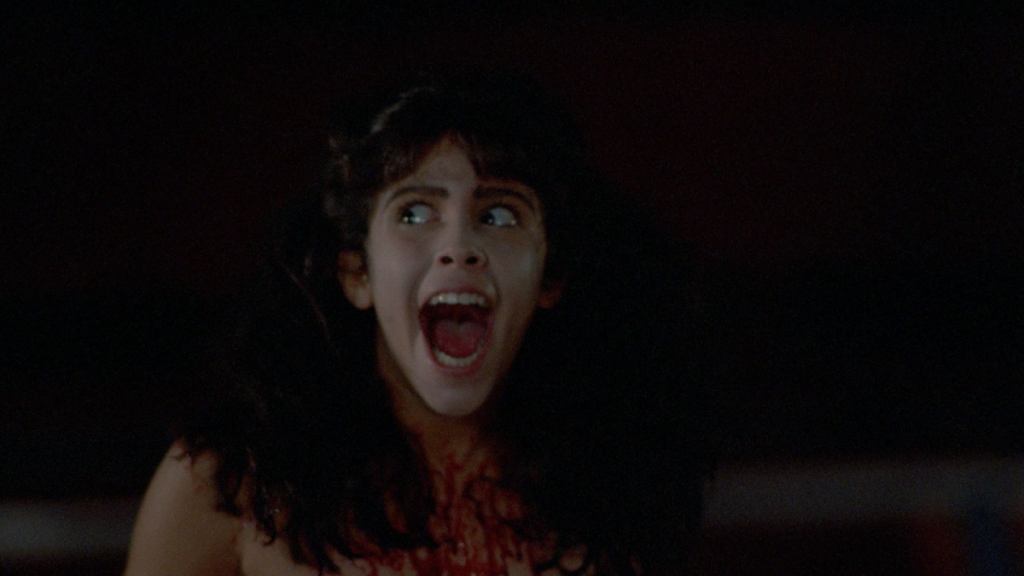



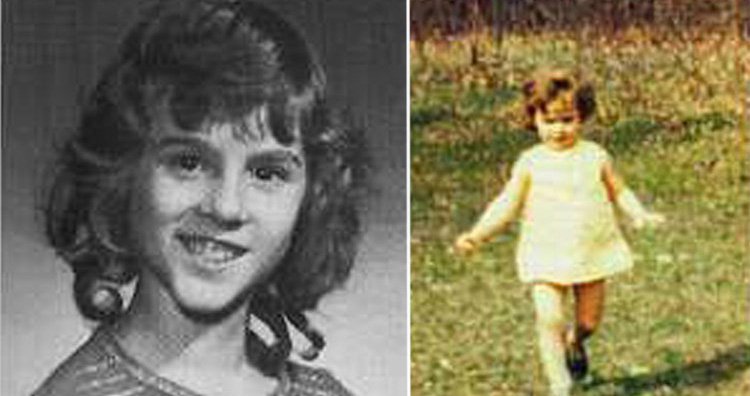
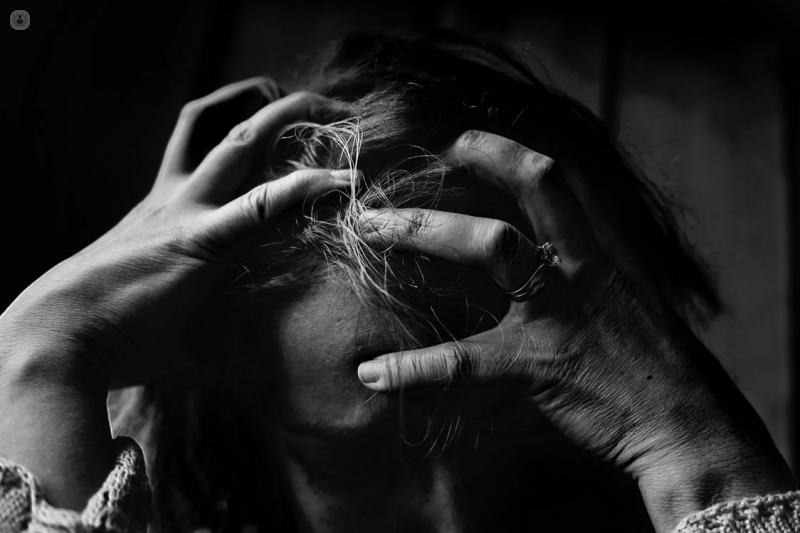

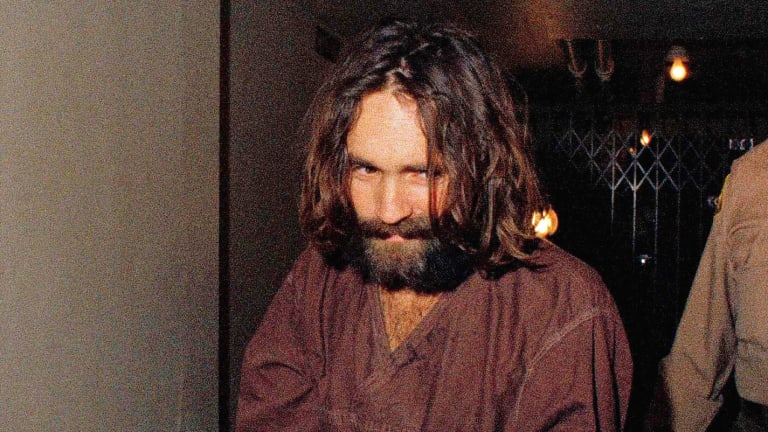

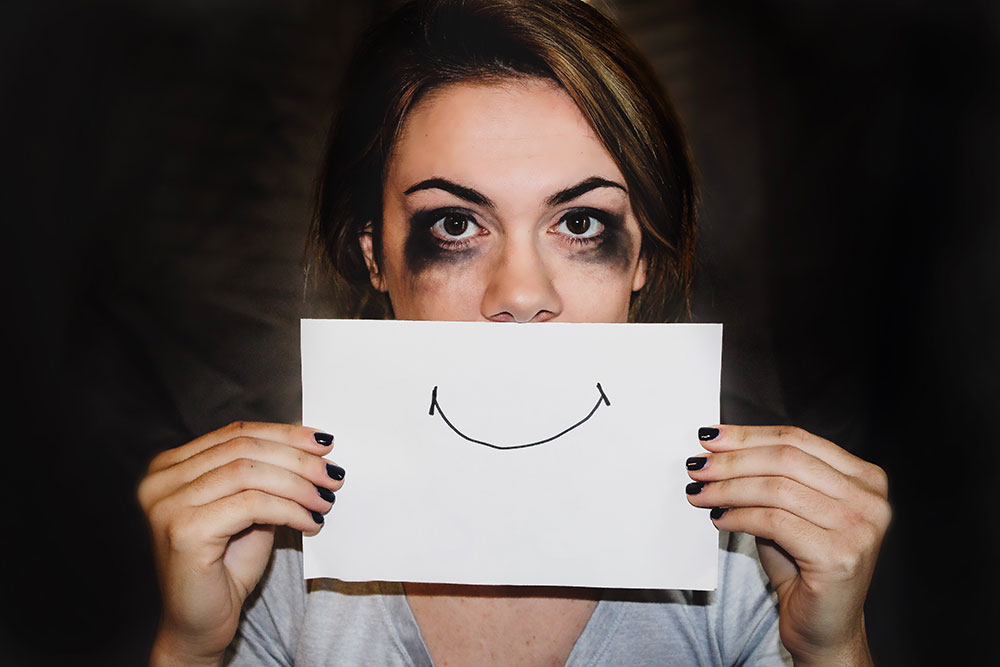
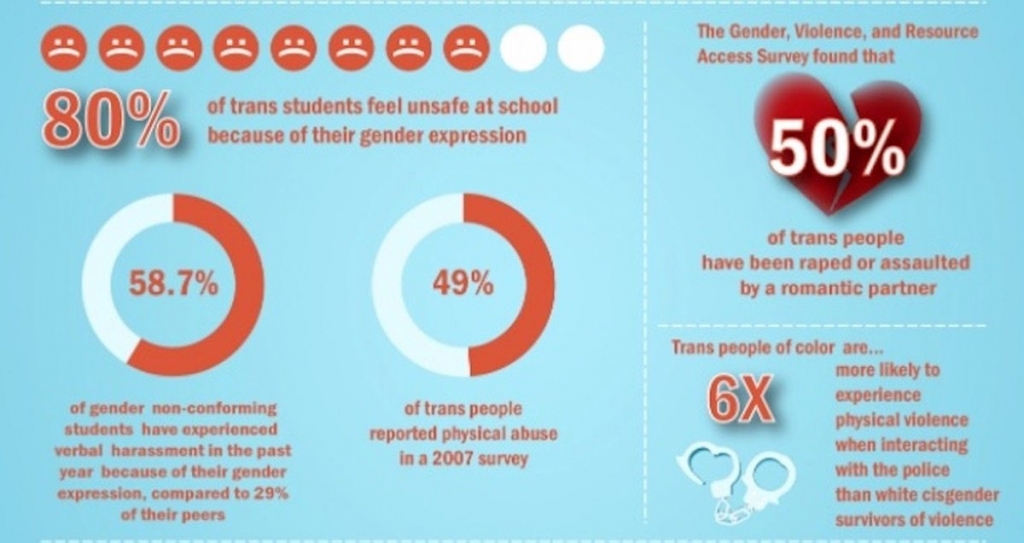

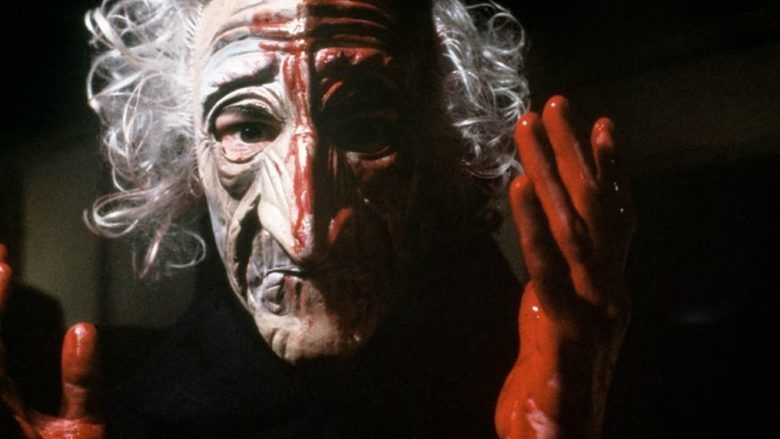

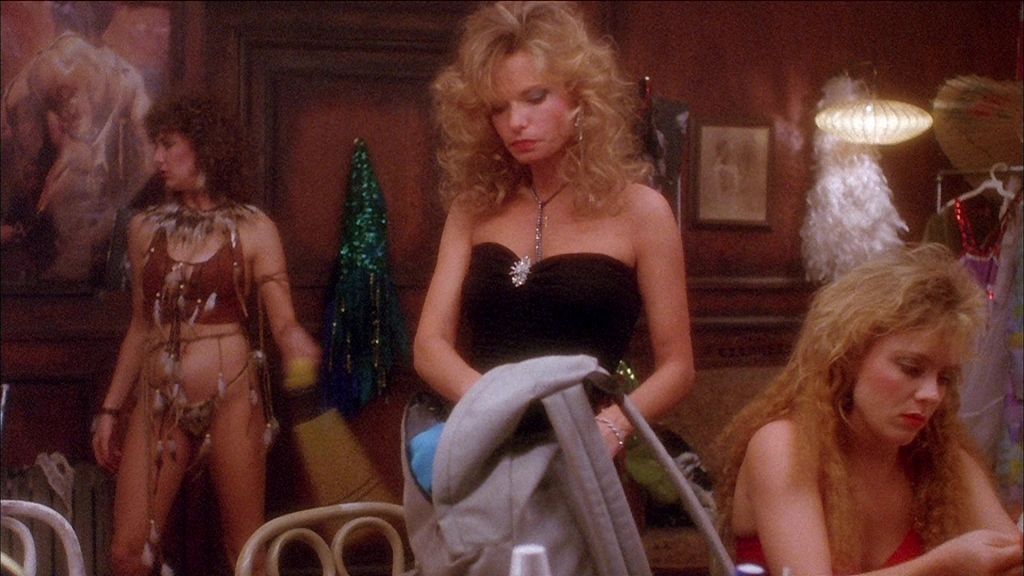
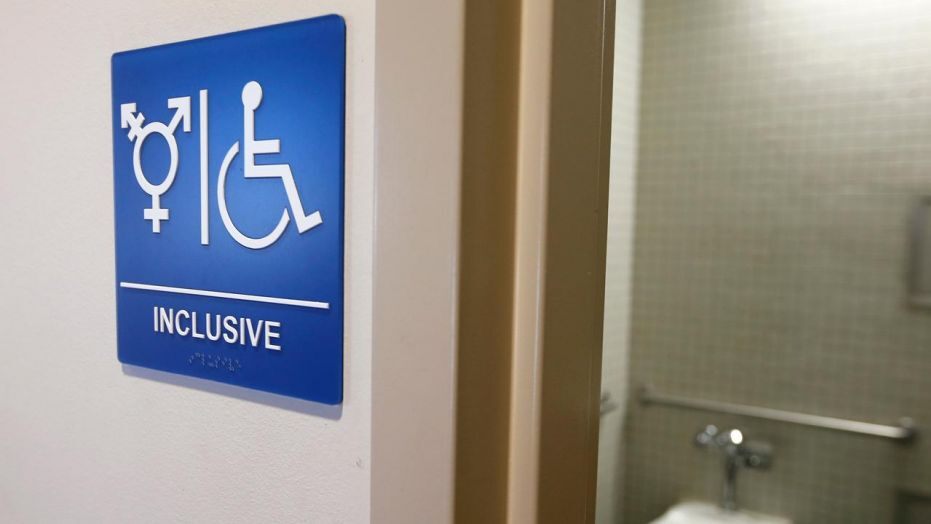
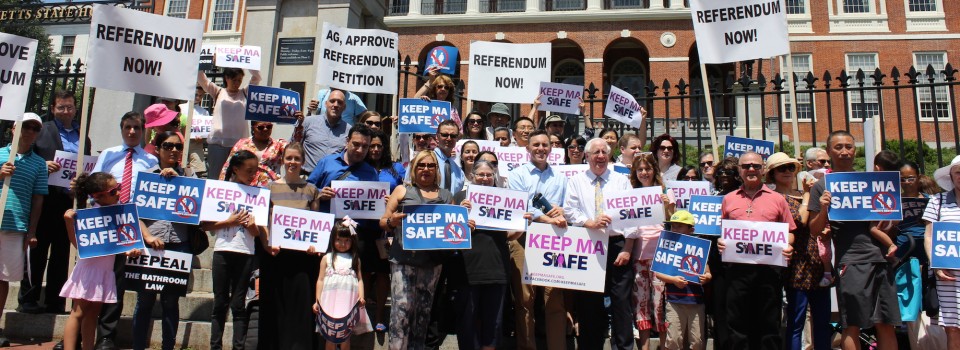


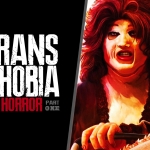


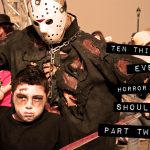








Follow Us!